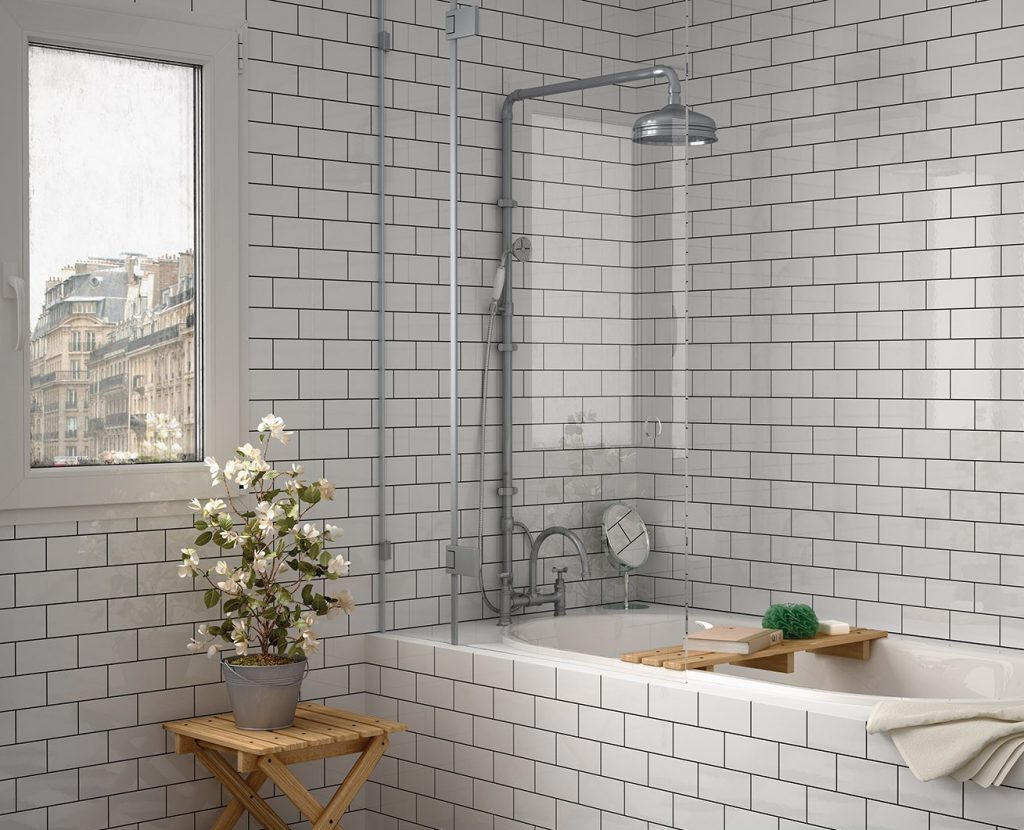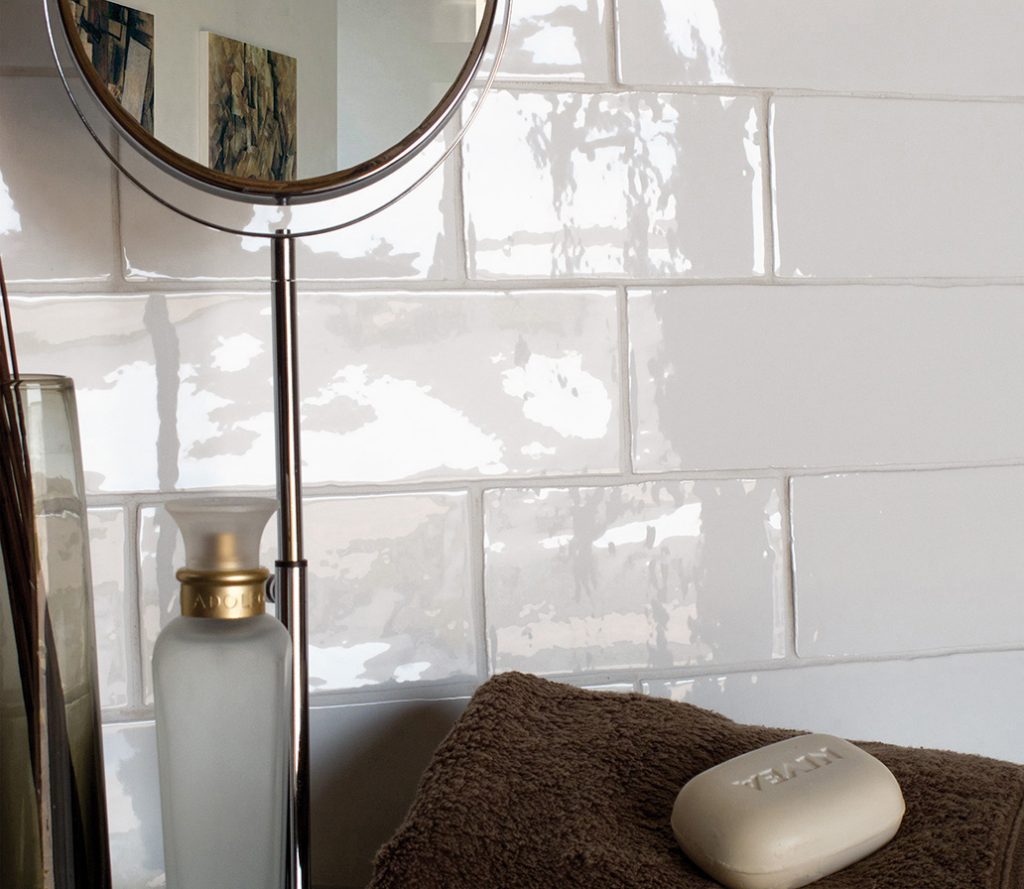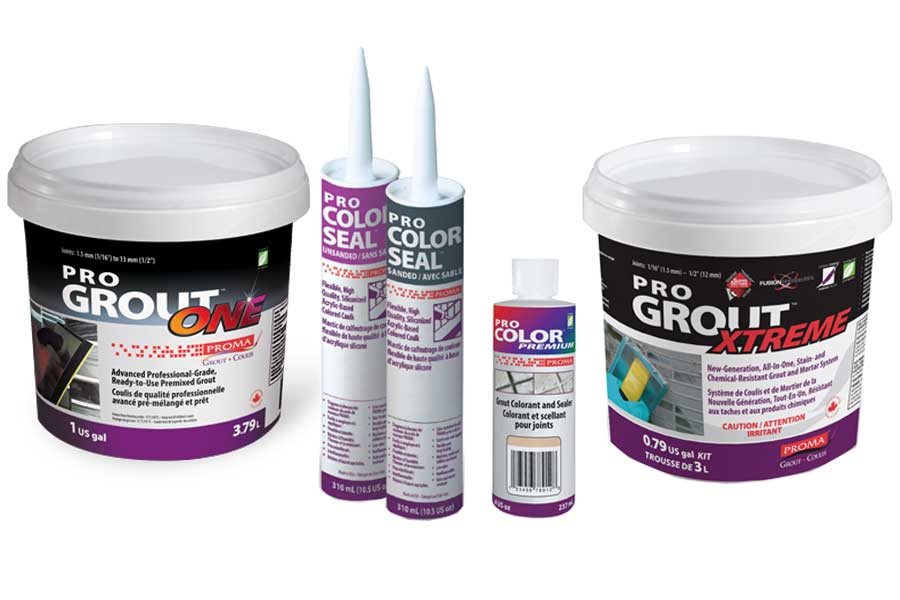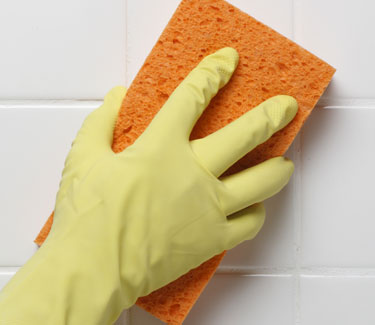All you need to know to choose the right grout
The application of grout is the last step when you install ceramic. It allows you to seal in spaces between tiles, preventing dust to enter, and adding a final aesthetic touch.
The grout color
The color of your grout is very important if you want a pleasing result. You should choose it carefully, depending on several criteria: the tile color, the effect that you want, and your personal taste.
If you want a very contemporary vintage effect, opt for a grout which will contrast with your tile color. For example, if your ceramic is white and that you want to give a contemporary look to your room, choose a dark grout, or even a colored grout in order to add a touch of color. Very trendy!
A piece of advice; if you have patterned tiles, avoid adding more flourishes with a contrasting or colored grout. The design of the tile will be sufficient to give the touch of creativity that you are looking for.
However, if you prefer a simpler and cleaner design, choose a grout that is in the same shade as your tiles. This will harmonize and soften the final aspect of your ceramic covering.
Also, keep in mind that clear colored grouts tend to become dirtier more easily. Instead, opt for neutral colors (grey, beige) or dark colors for your floors and countertops.
The grout type
The grout composition has to be considered depending on the location and the type of your tiles. Which finish do they have? Are they glossy, polished, mat? Are they porcelain, glass, natural stone? Will they be in a wet place? Inside or outside?
There are several grout types:
- Traditional grouts (cement grouts): They require to be mixed with water and a sealant or an additive which will make the grout less dirtier.
- With sand: Sanded grouts are more solid because they prevent joints from cracks and don’t shrink when they harden throughout the drying. Therefore, they are very recommended for floors.
- Without sand: Unsanded grouts don’t damage the ceramic. Therefore, a glossy finish won’t be scratched by the grout. Plus, they fit thin joints better.
- Premium grouts: They dry very fast and are perfect for the outside and rushed sites. They are also very convenient for thin joints (1/16) even if they contain sand (PRO TOPGROUT), because it is fine sand. However, due to the fact that they are quick-setting, they are more difficult to apply. That is why non-professionals should opt for a traditional grout.
- Pre-mixed grouts: They are easy, or at least quick to apply, because they don’t require any addition to the preparation (PRO GROUT ONE). But above all, they are very stains resistant, even better than grouts with a sealant or an additive. Lastly, they can be applied with every type of tiles and used both inside and outside.
- Epoxy grouts: They are the easiest to clean (PRO GROUT XTREME). Therefore, they are very recommended for kitchens, especially because they don’t cause bacterial proliferations. However, once dry, the excess from an epoxy grout will be difficult to remove. Be careful when you apply it.
- Caulking grouts: Strongly recommended for expansion joints and joints which risk to move (edges), caulks are flexible putties. They prevent joints from cracking but also from resisting to water, provided that water can flow properly. Therefore, they are recommended for showers joints also (PRO COLOR SEAL).
All things considered, you have many choices available!
The grout maintenance
With time, joints can tarnish, be stained or even have mold in wet locations like a bathroom or outside.
To clean them, or at least, refresh them, you have several solutions:
- Cleaning products: To remove the dirt embedded in the joints, you have to use light acid cleaners. Warning; don’t use acid products on marble, calcareous stones and quartz! In order to avoid the surplus grout residue that we find on our tiles after their application, you can use products that make the application of the grout easier while protecting the tiles (PRO GROUT EASE). This product dries very quickly and is water soluble, which is very convenient to clean when we have very textured tiles or porous natural stones that the grout could stain.
For the kitchen, choose alkaline products, as they are very effective against fats.
- Sealants: Once the joints are well cleaned, you should apply a sealant to them. This will protect your grout from stains and molds.
- Dyes: Dyes are used to restore every type of cement and epoxy grouts (PRO COLORS PREMIUM). You can apply the dye on top of dirty or discoloured grout, provided that the joints are not very degraded. Dyes also allow joints to be sealed permanently, and even act as a protection from mold and stains.
Now you know everything, or almost, about grout! The good choice is up to you!
If you still have questions on this topic, don’t hesitate to ask our sales advisor in store, or write to us at infoweb@latuilerie.qc.ca.




